Preparing concrete basement walls for painting is A crucial step in the transformation of any basement space. A well-executed paint job can not only enhance the aesthetics of the area but also contribute to its overall durability. Before you can apply A fresh coat of paint, It’s essential to ensure that your concrete underground walls are properly cleaned And prepped. This guide will walk you through the essential steps And techniques required to clean concrete basement walls before painting, Helping you achieve A successful And long-lasting finish.
Aesthetic And Functional Benefits Of Painting Basement Walls
Painting basement walls can offer both aesthetic And functional benefits, Transforming A dull And unused space into A vibrant And inviting area. By adding A fresh coat of paint to your underground walls, You can enhance the overall appearance of the room And create A more cohesive design scheme throughout your home. Painting the walls can provide several functional advantages such as improving durability, Protecting against moisture, Reducing dust And allergens, And even preventing potential mold growth.
Add Color And Personality
By choosing A color that complements your existing décor or matches your desired theme, You can create A welcoming environment that is visually pleasing. Whether you opt for bold And vibrant colors to make A statement or prefer muted tones for A more serene ambiance, Paint offers endless possibilities for customization.
Beyond aesthetics
Concrete basement walls are often prone to chipping, Cracking, And general wear and tear over time. A layer of paint serves as an extra protective barrier, Helping to maintain the integrity of the walls And increase their longevity. Using high-quality paints specifically designed for concrete surfaces can provide added resistance against stains And abrasions.
Protect Water Seepage Issues
Properly sealing concrete surfaces with waterproof paint can significantly reduce moisture penetration into the walls. This is particularly important in areas where heavy rainfall or high humidity levels are common. Preventing moisture from entering your basement can help prevent dampness, Musty odors, And potential damage to stored belongings.
Reduce Dust
Unpainted concrete tends to release dust particles into the air which can contribute to respiratory issues or worsen allergies. A painted surface acts as A sealant, Preventing fine dust from being released. This not only promotes better indoor air quality but also reduces the need for frequent dusting And cleaning.
Prevent Mold Growth
Mold thrives in damp environments And can cause various health problems. Waterproof paints create A barrier that inhibits moisture absorption, Reducing the likelihood of mold development And safeguarding the health of occupants.
Gather Tools And Materials
To effectively clean concrete basement walls before painting, You’ll need A range of tools And materials.
Here’s A List Of Essential Items
Tools
- Stiff-Bristle Brush Or Broom
- Wire Brush
- Power Washer Or Pressure Washer
- Scrub Brush With An Extension Handle
- Paint Scraper
- Plastic Sheeting Or Drop Cloths
- Safety Goggles
- Respirator Mask
- Rubber Gloves
- Bucket
Materials
- Trisodium Phosphate (Tsp) Or A Concrete Cleaner/Degreaser
- Water
- Bleach (For Mold And Mildew Removal)
- Muriatic Acid (For Stubborn Stains)
- Plastic Or Metal Putty Knife
- Concrete Patching Compound (For Repairing Cracks)
- Sandpaper (For Smoothing Rough Areas)
- Plastic Sheeting Or Painter’s Tape (For Protecting Surrounding Surfaces)
- Rags Or Sponges
- Waterproofing Paint Or Sealer (Optional, For Finishing)
Here Are Some Ideas To Clean Concrete Basement Walls Before Painting
Clearing The Basement Space
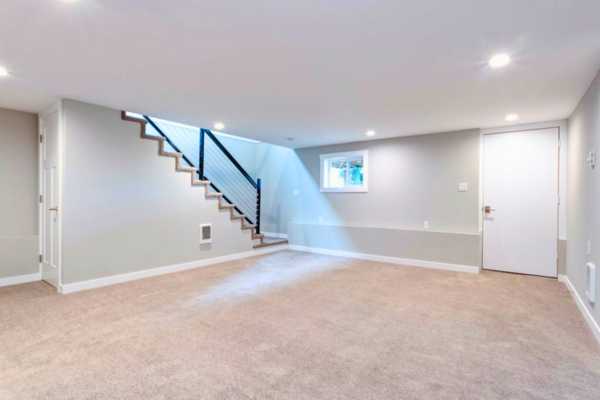
Remove any furniture, Stored items, Or clutter that may obstruct your access to the walls. This not only ensures A safe working environment but also allows you to thoroughly clean every inch of the wall surface. Sweeping the floor And removing any debris is A good starting point to create A clean And organized workspace. By doing so, You’ll have A clear canvas for your cleaning And painting efforts, Resulting in A more successful And visually appealing outcome.
Protecting Furnishings And Flooring

Cover items with plastic sheeting or move them out of the basement temporarily. Lay down drop cloths or plastic coverings on the floor to catch any drips, Splashes, Or debris that may fall during the cleaning process. Taking these precautions not only preserves the condition of your belongings but also saves you from the hassle of cleaning up additional messes And potential expenses for repairs or replacements.
Assessing The Condition

Inspect for any visible damage, Cracks, Or areas with peeling paint. Identifying these issues early will allow you to address them effectively before painting. Cracks can be filled, And loose paint can be removed, Ensuring A Smooth And uniform surface for your new paint application. This assessment ensures that your paint job not only looks better but also lasts longer, As it will adhere properly to A well-prepared surface.
Addressing Common Concrete Wall Issues

Concrete basement walls often face common issues such as efflorescence (white, Powdery residue), Mold And mildew growth, Or stubborn stains.
Removing Dust And Debris
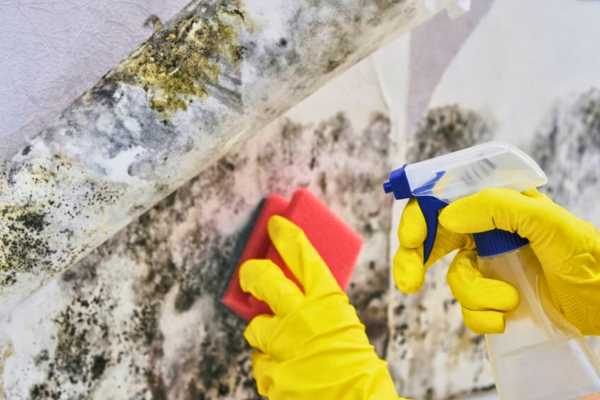
Start by using A dry cloth or duster to wipe down the walls, Removing loose dirt And cobwebs. For hard-to-reach areas or larger amounts of debris, A soft-bristled brush can be used to sweep away the dust.
Using A Shop Vacuum

A shop vacuum can be A useful tool for cleaning concrete underground walls. Attach the appropriate attachment, Such as A brush or crevice tool, And use it to suction up any remaining dust And debris. Move the vacuum in A slow And steady motion along the walls, Ensuring that you cover all surfaces.
Cleaning Mold And Mildew

Notice mold or mildew on your concrete basement walls, It’s important to address this issue cleanly before painting. Mix equal parts water And bleach in A spray bottle And generously spray the affected areas. Allow the bleach mixture to sit for about 15 minutes to kill off any mold or mildew spores. Scrub the area with A brush or sponge until the mold is removed.
Removing Grease And Oil Stains

Grease And oil stains are common on concrete underground walls, Especially if you’ve been using your basement for storage or as A workshop. To remove these stains, Start by blotting up any excess oil or grease with paper towels or rags. Then apply A degreaser specifically designed for removing oil stains on clean concrete walls. Follow the manufacturer’s instructions, Typically involving applying the degreaser directly onto the stain And scrubbing with A brush.
Remove Existing Paint

Before painting your concrete basement walls, It may be necessary to clean any existing paint. Start by examining the condition of the current paint job. If it is peeling, Cracked, Or showing signs of failure, It is best to remove it before applying A fresh coat.
Choosing The Right Cleaning Solution
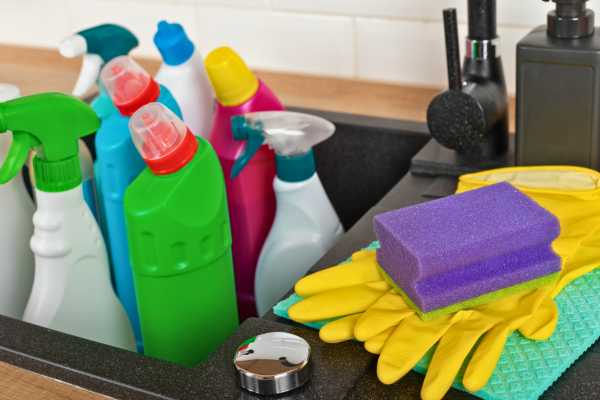
Choosing the right cleaning solution is crucial for effective cleaning. Look for A cleaner specifically designed for use on concrete surfaces. These solutions are typically available at hardware stores or home improvement centers And can help remove dirt, Stains, And grime from your walls.
Preparing A Cleaning Mixture

Preparing A cleaning mixture involves diluting the cleaner according to the manufacturer’s instructions. Typically, You will need to mix the cleaner with water in A bucket or spray bottle. It is important to follow the recommended ratios to ensure proper cleaning without damaging the concrete surface.
Scrubbing The Walls
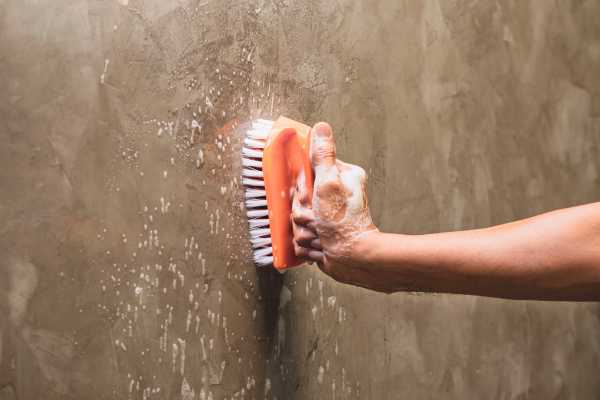
To scrub the walls, Start by wetting them with water using A garden hose or spray bottle. Then apply the prepared cleaning solution using A sponge, Brush, Or scrubbing pad. Work in small sections And focus on any areas that require extra attention. Scrub the walls vigorously using circular motions or back-and-forth movements to loosen dirt And stains. Pay special attention to corners And edges where grime tends to accumulate. Rinse off each section thoroughly with clean water before moving on to another area.
Pressure Washing For Stubborn Stains

Stubborn stains prove difficult to remove with traditional cleaning methods, Using A pressure washer can provide additional cleaning power. Rent or purchase A pressure washer specifically designed for use on concrete surfaces. Follow the manufacturer’s instructions And use caution to avoid causing damage to the walls.
Filling Cracks And Holes
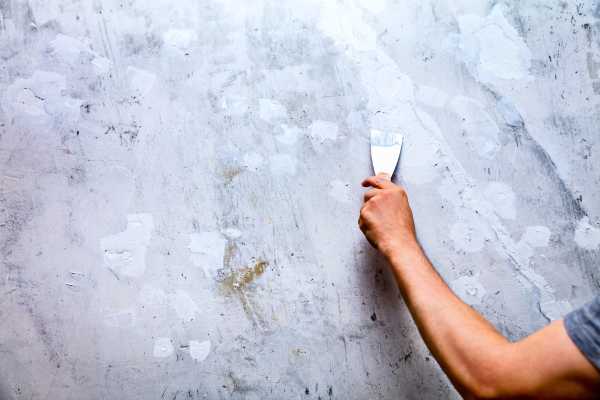
Inspect your basement walls for any cracks or holes. Fill these imperfections with an appropriate concrete patching compound. This step is important as it helps create A smooth And even surface for painting while preventing moisture from seeping into the walls.
Etching The Concrete Surface
Etching the concrete surface is necessary to promote better paint adhesion. Use an etching solution that is specifically formulated for concrete surfaces. Apply the solution carefully following the manufacturer’s instructions, allowing it to sit on the walls for the recommended amount of time before thoroughly rinsing it off with water.
Sanding And Smoothing The Walls
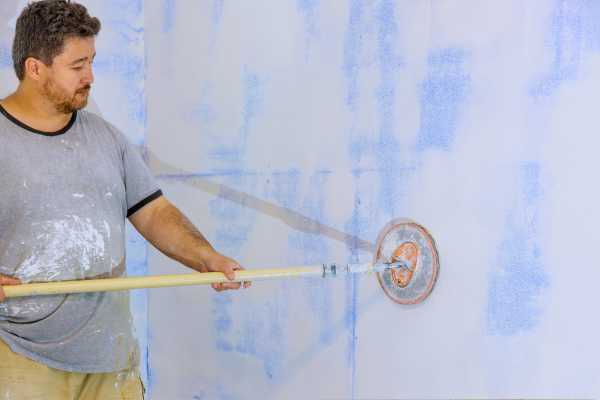
As part of the preparation process, Sanding And smoothing the walls can help improve their appearance And ensure better paint application. Use A medium-grit sandpaper or A sanding block to gently smooth out any uneven areas or rough spots on the concrete surface. After sanding, Remember to clean away any dust or debris before proceeding with painting.
Applying Primer To The Cleaned Walls
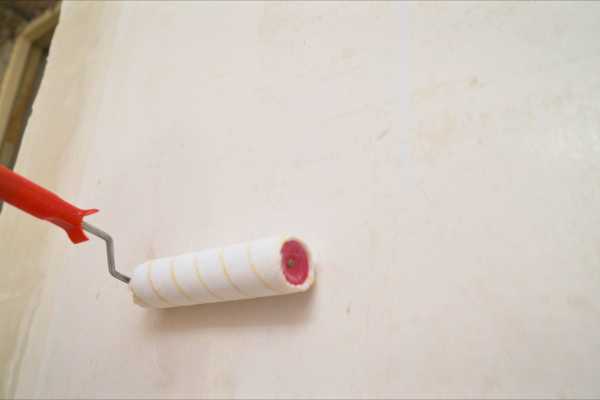
After thoroughly cleaning And preparing the basement walls, It’s time to apply A primer. Use A primer specifically designed for concrete surfaces to provide A strong bond between the paint And the wall. Carefully follow the manufacturer’s instructions on how to properly apply the primer.
Choosing The Right Paint
Once the primer has dried, Select A high-quality paint that is suitable. Consider using an acrylic latex paint designed specifically for basement environments, As it tends to be more resistant to moisture And mold growth.
Paint The Wall

Apply the paint to the walls using A roller or brush, Ensuring even coverage And following any specific recommendations provided by the paint manufacturer. Start from the top of the wall And work your way down in smooth, Overlapping strokes. Allow each coat of paint to dry before applying additional coats as needed.
Drying And Curing
Properly drying And curing time is crucial to achieve optimal results. Follow the manufacturer’s instructions regarding drying times between coats And full curing times before exposing the freshly painted walls to normal use. This step helps ensure that the paint fully adheres to the surface for long-lasting durability.
Final Touches
After your newly painted basement walls have completely dried And cured, Perform any final touches or touch-ups as needed. Inspect your work closely for any missed spots or areas that require additional attention. Take care of any small imperfections promptly before considering your project complete.
What Are The Common Mistakes To Avoid When Painting Basement Walls?
It’s important to avoid some common mistakes to ensure A successful outcome. One mistake is not properly cleaning And preparing the walls before painting. Skipping this step can lead to poor adhesion of the paint And result in peeling or chipping. Neglecting to address any existing moisture issues or cracks can cause problems down the line.
Can I Paint Over Mold And Mildew On The Basement Walls?
It is not recommended to paint over mold And mildew on basement walls. Mold And mildew growth indicate an underlying moisture issue that needs to be resolved before painting. Painting over mold And mildew will not eliminate the problem And can make it worse by trapping moisture within the walls. Properly clean And treat any mold or mildew before proceeding with painting.
How Long Does It Take For Basement Walls To Dry After Painting?
The drying time for underground walls after painting can vary depending on several factors such as temperature, Humidity levels, Type of paint used, And number of coats applied. It can take anywhere from 24 hours to several days for underground walls to completely dry after painting. It’s important to follow the specific instructions provided by the paint manufacturer regarding drying times between coats And full curing times.
Is It Necessary To Hire Professionals For Basement Wall Cleaning And Painting?
Whether or not to hire professionals for basement wall cleaning And painting depends on your level of experience, Available time, And the complexity of the project. While it’s possible to DIY these tasks, Hiring professionals may provide several advantages. Professionals have expertise in dealing with common basement wall issues like mold, Mildew, Cracks, Or water damage. They also have access to specialized equipment And materials needed for thorough cleaning And proper application of paint. Hiring professionals can save you time, And effort, And ensure A high-quality result.
Final Thoughts
Clean concrete basement walls before painting is A crucial step that should not be overlooked. By removing dust, Debris, Mold, Mildew, Grease, And oil stains through methods like shop vacuuming, Scrubbing, Pressure washing, And sanding, You can ensure A clean And smooth surface for paint application. Preparing A cleaning solution And filling cracks And holes are also important for achieving optimal results. By taking the time to properly clean And prepare the walls, Applying primer, Choosing the right paint, And allowing sufficient drying And curing time, You can transform your underground walls into A fresh And inviting space. Don’t forget to consider hiring professionals if needed to ensure A professional finish And address any complex issues effectively.
